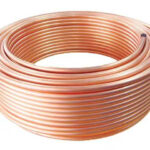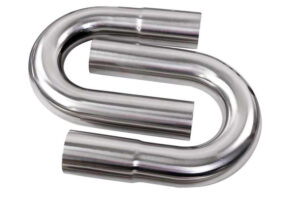
Cold Pipe Bending
October 23, 2023
Induction bending
October 27, 2023Mastering Rotary Draw Bending: The Ultimate Guide for Precision Tube Fabrication

It is a highly precise and versatile tube bending technique widely used in various industries, including automotive, aerospace, construction, and manufacturing. This article aims to provide a comprehensive guide on rotary draw bending, explaining its fundamentals, benefits, applications, and best practices. Whether you are a design engineer, manufacturer, or simply interested in the world of tube fabrication, this guide will equip you with the knowledge needed to excel in this kind of pipe bending.
Understanding Rotary Draw Bending:
Defining Rotary Draw Bending:
Rotary draw bending, also known as mandrel bending or cold bending, is a tube bending process that utilizes a mandrel, die, and wiper to produce smooth and precise bends. This technique involves clamping one end of the tube and rotating it around a die while applying force to the tube’s outer surface. The mandrel inside the tube prevents flattening or distortion during the bending process, ensuring consistent and accurate bends.
Advantages :
1. Exceptional Precision: Rotary draw bending offers exceptional control over bend angles, centerline radii, and wall thinning, resulting in high-quality bent tubes with tight tolerances.
2. Smooth and Consistent Bends: By employing a mandrel and wiper, it eliminates the risk of wrinkling or buckling, producing smooth and consistent bends free from imperfections.
3. Versatility: This technique can bend a wide range of materials, including stainless steel, aluminum, carbon steel, and various alloys, making it suitable for diverse applications and industries.
4. Wide Range of Bend Options: it accommodates both simple and complex bends, such as multiple bends in different planes, compound bends, and tight-radius bends.
Applications:
1. Automotive Industry: Rotary draw bending is extensively used in manufacturing exhaust systems, roll cages, frame components, and suspension systems for automobiles.
2. Aerospace Industry: This technique plays a vital role in producing aerospace components like engine tubes, structural tubing, and hydraulic systems.
3. Construction Industry: It is employed in architectural and structural applications, including handrails, staircases, frames, and supports.
4. Manufacturing Industry: From furniture and appliances to medical equipment and machinery, it finds applications in a wide range of manufacturing processes.
Best Practices for Rotary Draw Bending:
1. Proper Tooling Selection: Choosing the right mandrel and die set is essential to achieve accurate and consistent bends. Consider factors such as tube diameter, material, and desired bend radius to optimize tooling selection.
2. Design Considerations: Ensure that the tube’s design accounts for the limitations and capabilities of rotary draw bending. Factors such as bend radii, wall thickness, and material properties should be carefully considered during the design phase.
3. Material Handling and Preparation: Proper cleaning, lubrication, and preheating of the tube can help reduce friction and improve bend quality. Additionally, handling tubes with care and avoiding scratches or dents is crucial.
4. Operator Skill and Training: Skilled operators with adequate training and experience are essential for achieving optimal results. Regular maintenance and inspection of the bending equipment are also crucial to ensure accurate and safe operations.
Conclusion:
It is a precise and versatile tube fabrication technique that offers exceptional control over bend angles, wall thinning, and centerline radii. Its advantages of high precision, smooth bends, and versatility make it a preferred choice across industries. By understanding the fundamentals, applications, and best practices outlined in this guide, professionals can effectively utilize rotary draw bending to achieve superior tube fabrication results. Embrace the capabilities of this technique and unlock endless possibilities in the world of precision bending.
